Creating the Perfect Habitat for Your Lutino Cockatiel: A Guide
Discover how to create the perfect habitat for your Lutino Cockatiel, ensuring a safe, stimulating environment for your feathered friend.
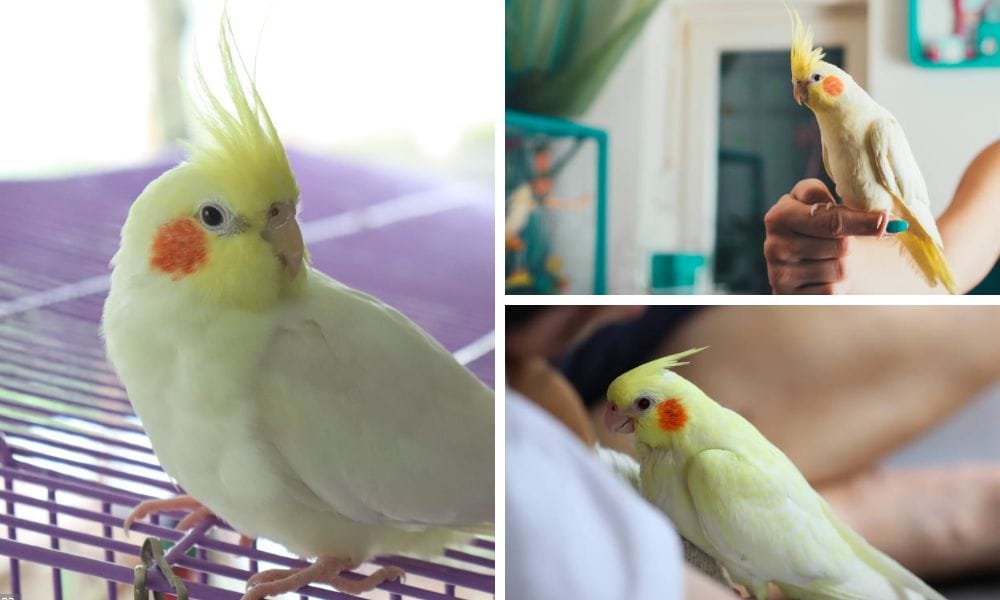
Lutino cockatiels, with their striking white plumage and red eyes, are a captivating sight for any bird enthusiast. The lutino cockatiel mutation was the second cockatiel mutation to be established in the USA. As the second cockatiel mutation to be bred in aviculture, these birds have won the hearts of many with their playful nature and melodious chirping. If you're a first-time bird owner or an experienced aviculturist looking to create a haven for your lutino cockatiel, this article is your comprehensive guide.
Key Takeaways:
- Understand the specific needs of lutino cockatiels to create a comfortable and stimulating environment.
- Learn about the dietary requirements and social needs of these birds to ensure their health and happiness.
- Discover how to set up the perfect cage and choose the right toys and accessories for your lutino cockatiel.
Understanding the Lutino Mutation
Lutino cockatiels are known for their beautiful yellow and white feathers, a result of the lutino gene which causes a lack of melanin, the pigment that gives color to the feathers. This mutation can be found in both males and females, with the males often displaying a bright yellow hue. Lutino coloration is the second cockatiel mutation after the pied version was established. The lutino mutation is different from albinism, which results in a completely white bird with red eyes.
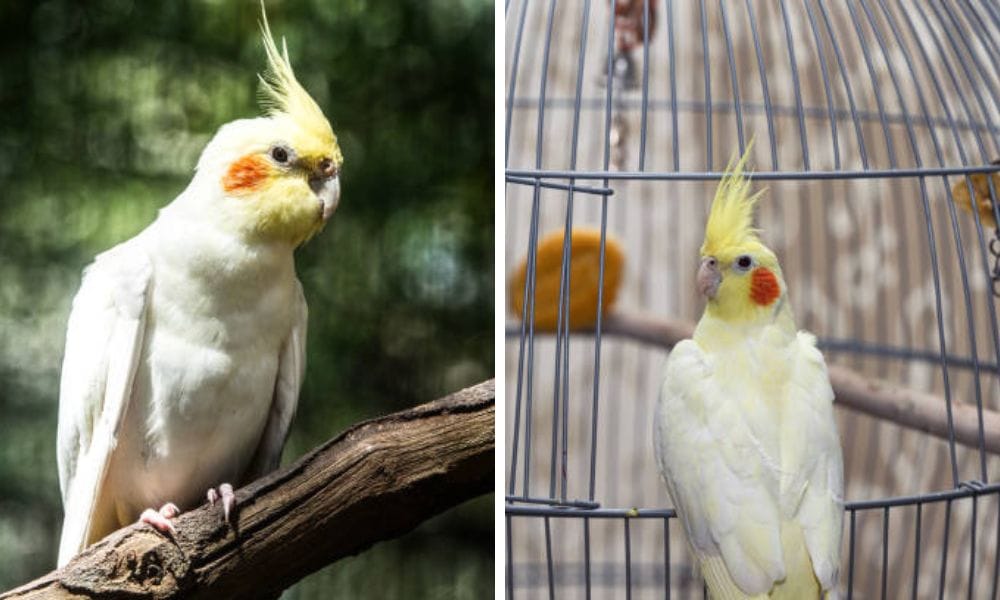
The Importance of a Spacious Cage
The cage is your lutino cockatiel's home, and it should be spacious enough to allow for wings to be fully extended and flapped without hitting the sides. A cage for a single cockatiel should be at least 20 inches by 20 inches by 24 inches. For those considering a second cockatiel, a larger cage will be necessary to prevent territorial disputes and to provide ample space for both birds to live comfortably.
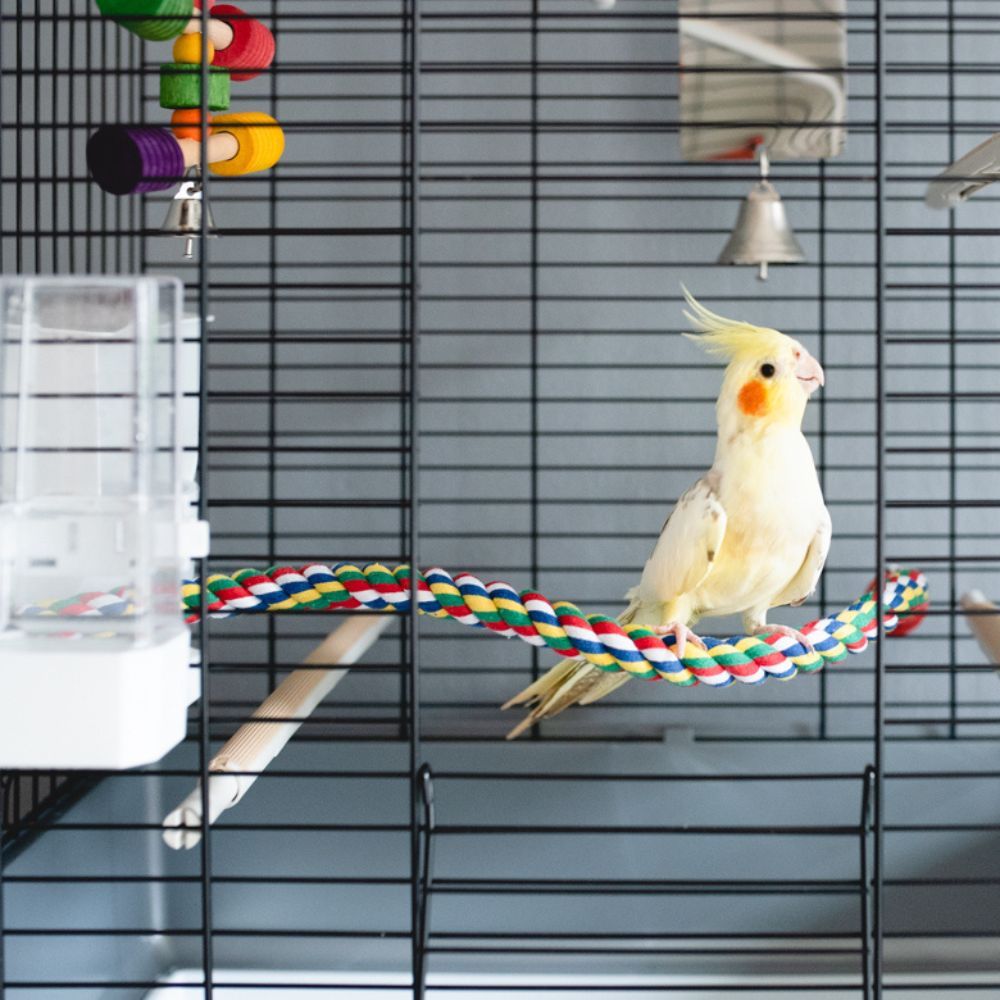
Location, Location, Location
Positioning the cage in a part of your home where the family spends a lot of time will help your lutino cockatiel feel like part of the group. These birds are social creatures and thrive on interaction. Lutino cockatiels can learn a few words and phrases with diligent training, emphasizing the importance of social interaction and training. However, avoid placing the cage in direct sunlight, drafty areas, or the kitchen, where fumes can be harmful.
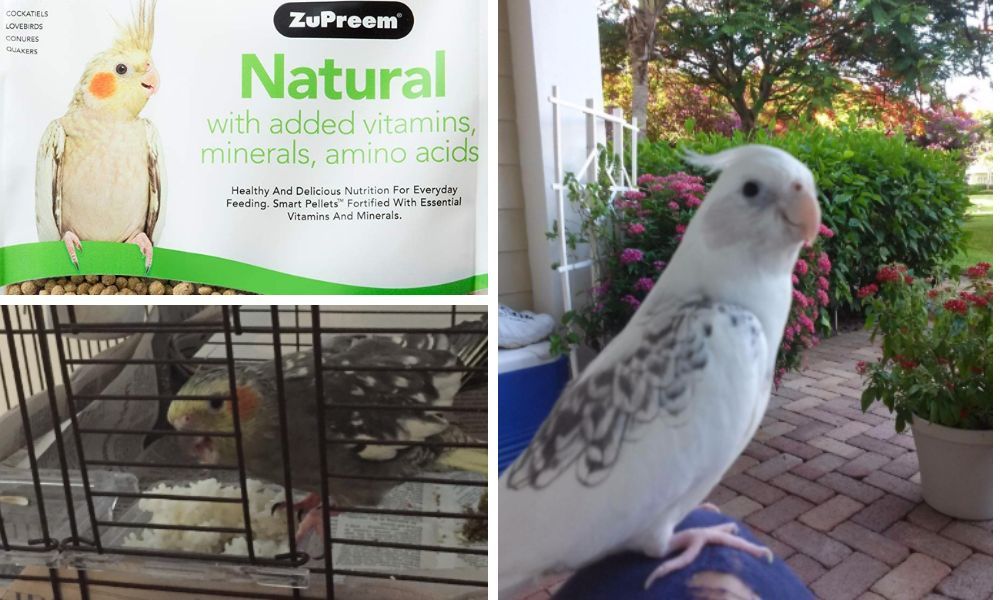
The Right Diet for Vibrant Feathers
A lutino cockatiel’s diet should consist of a mix of seeds, cockatiel pellets, and fresh fruits and vegetables. Bird breeders have developed dietary recommendations to ensure the health and vibrant feathers of lutino cockatiels. Seeds alone are not enough, as they can lead to obesity and other health issues. Pellets are formulated to provide a balanced diet, and fresh produce like leafy greens, carrots, and apples can add variety and essential nutrients.
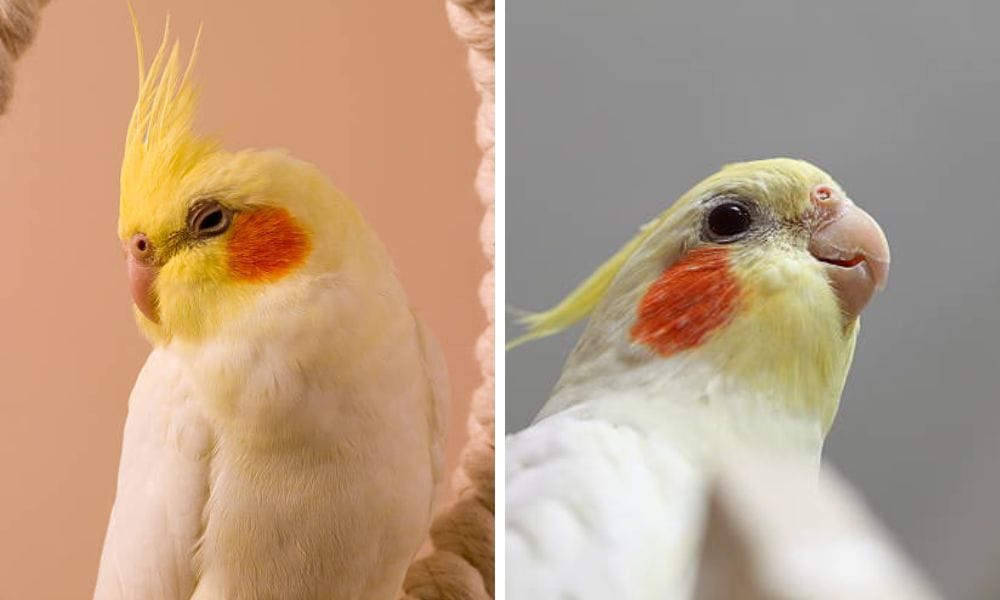
Social Interaction and Companionship
Lutino cockatiels are gregarious by nature and enjoy the company of their human family or other birds. If you're often away from home, consider getting a second cockatiel to keep your bird company. Introducing a new bird should be done carefully to ensure compatibility and to prevent any aggressive behavior.
Toys and Entertainment
Toys are not just for fun; they're crucial for your lutino cockatiel's mental and physical health. Offer a variety of toys, including those that can be chewed, climbed on, and those that make noise, like bells. Rotate the toys regularly to keep your bird interested and engaged.
The Intricacies of Color Mutations in Lutino Cockatiels
When it comes to Lutino Cockatiels, color mutations are a fascinating subject that can catch the eye of any bird enthusiast. The Lutino mutation is characterized by a stunning yellow or white body with vivid orange cheek patches and a long, elegant crest. This mutation is a result of a lack of melanin, which normally gives feathers their grey color. As a first-time bird owner, you might be intrigued by other mutations such as albino, pied, cinnamon, and pearl. Each of these mutations presents a unique palette that adds to the diversity of these charming birds. Additionally, the cinnamon pearl mutation combines unique color variations, making it a notable and attractive option for breeders.
Understanding these color variations is crucial for breeders and owners alike. For instance, the pearl mutation presents a scalloped pattern on the feathers, while the pied mutation leads to a mix of colored and white feathers, creating a distinct and random pattern. The cinnamon mutation softens the grey color to a warm brown, and the whiteface mutation removes the yellow and orange pigments entirely, resulting in a striking white and grey bird. Young female birds of the white face mutation often exhibit a dull grey coloration on their faces. The lutino pearl mutation also stands out with its unique genetics and coloration. It's important to note that the pearl cockatiel is a common mutation, contrary to some misconceptions. Pearl cockatiels are not rare and are frequently seen among various cockatiel mutations. The characteristics of pied female cockatiels add complexity to determining whether a bird carries the pied gene. The term wild type refers to the original and natural coloration of cockatiels, primarily grey with notable white wing flashes. Recognizing these signs can help you identify the specific breed of your pet and appreciate the rich tapestry of colors that Lutino Cockatiels and their variations bring to the world of smaller birds.
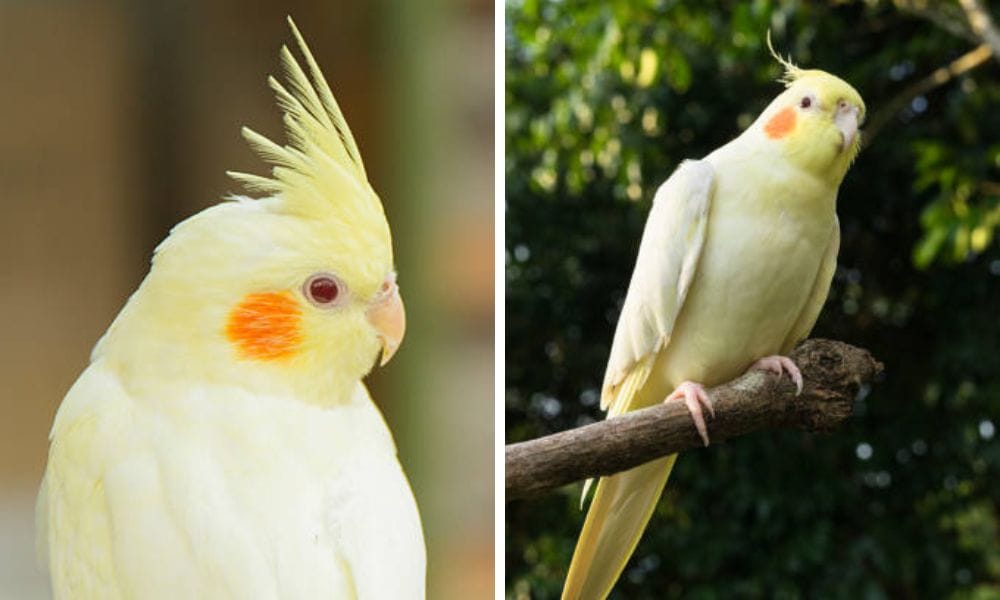
Male Lutino Cockatiels: Spotting the Difference
Identifying a male Lutino Cockatiel from a female can be a subtle art, as the differences are not always obvious, especially to the untrained eye. Lutino female cockatiels often exhibit a duller yellow face and a subtle greyish tint to their feathers. Generally, male Lutino Cockatiels may exhibit a brighter yellow coloration and a more vivid orange cheek patch compared to females. Additionally, during the breeding season, males often display more pronounced behaviors such as singing, strutting, and crest-fanning to attract a mate. These signs can be particularly helpful for first-time bird owners trying to determine the sex of their pets.
However, it’s important to note that some male Lutino Cockatiels may not show these typical signs, especially if they are younger or among certain rare variations. For example, the whiteface Lutino male will lack the characteristic orange cheek patch, making it even more challenging to distinguish from females. In such cases, consulting with avian experts like Cliff Barringer, who has extensive experience with cockatiels and their color mutations, can provide clarity. Observing your bird’s behavior and consulting with professionals can help you understand the subtle differences between male and female Lutino Cockatiels, ensuring that you provide the appropriate care for your feathered friend.
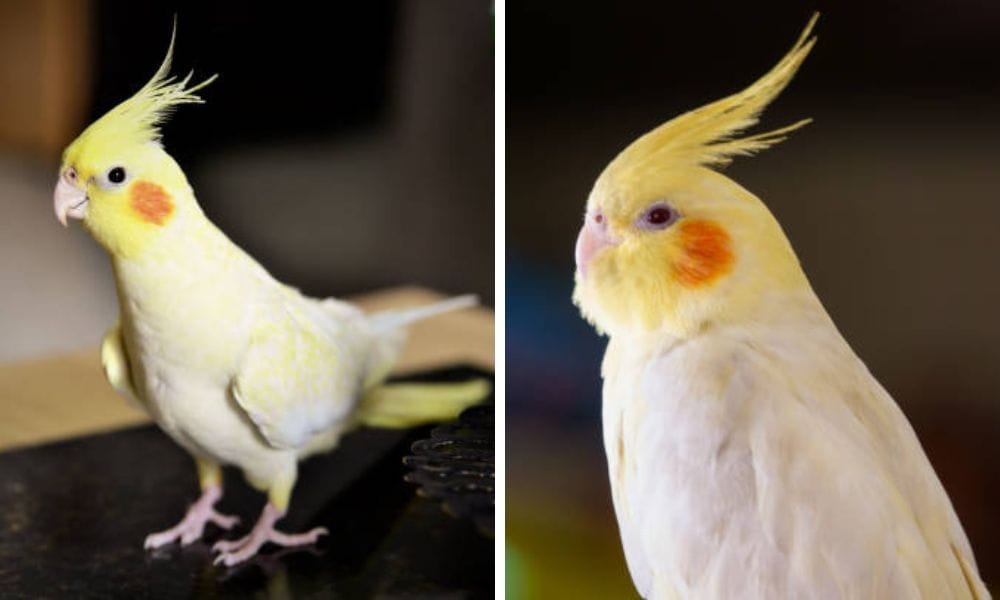
Special Considerations for Female Lutino Cockatiels
Female lutino cockatiels have unique characteristics that require special attention. Unlike their male counterparts, female lutino cockatiels often exhibit a duller yellow face and a subtle greyish tint to their feathers. This difference in appearance is not just cosmetic; it also reflects their distinct needs and behaviors.
One of the most critical aspects of caring for female lutino cockatiels is monitoring their reproductive health. These birds are prone to issues such as egg binding and ovarian cysts. To mitigate these risks, ensure they receive a balanced diet rich in calcium and protein, which are essential for egg production. Regular veterinary check-ups are also crucial to catch any potential health issues early.
Creating a comfortable and quiet environment is particularly important for female lutino cockatiels. They tend to be more sensitive to their surroundings, so a well-ventilated cage placed in a calm area of your home can make a significant difference. Providing a variety of toys and perches will help keep them mentally stimulated and physically active.
Socialization is another key factor. Female lutino cockatiels can be more timid and skittish compared to males. Gentle handling and regular interaction will help them build confidence and form strong bonds with their owners. Over time, with patience and care, they can become affectionate and trusting companions.
In summary, female lutino cockatiels require special care and attention to thrive. By providing a nutritious diet, a comfortable environment, and gentle socialization, you can ensure they lead a healthy and happy life.
Nest Box: A Cozy Retreat
If you're interested in breeding or simply want to provide a sense of security for your bird, a nest box can be a welcome addition to the cage. Ensure the nest box is the appropriate size for your cockatiel and is placed in a quiet corner of the cage.
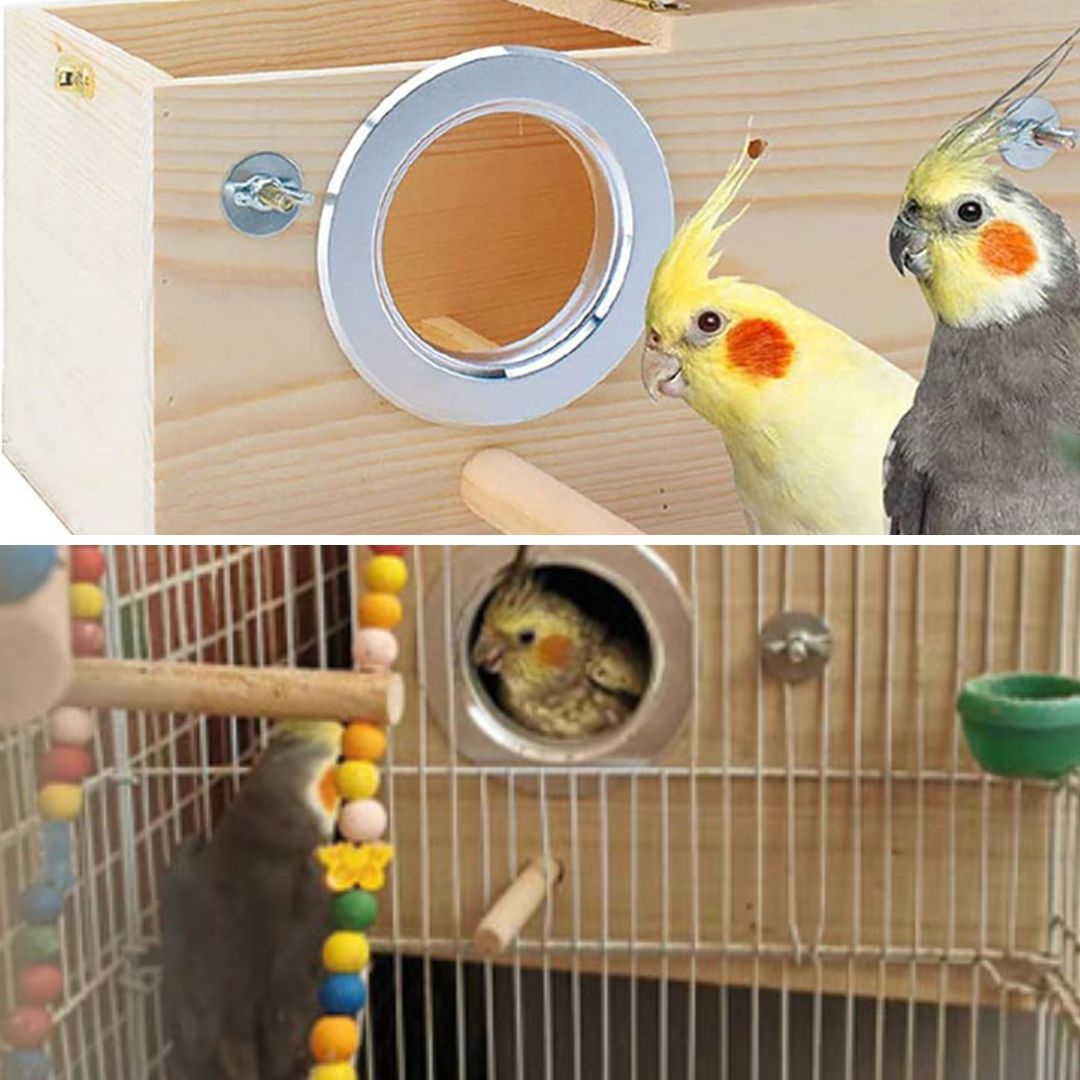
Regular Health Checks
A healthy lutino cockatiel should have bright, clear eyes, clean feathers, and be active and alert. Regularly check for any signs of illness, such as changes in behavior, appearance, or droppings. A visit to an avian vet should be scheduled at least once a year for a check-up.
Training and Bonding Time
Training your lutino cockatiel can be a rewarding experience for both you and your pet. Unlike other parrots, lutino cockatiels have specific training needs and behaviors that set them apart. Simple tricks, like stepping up onto your finger or whistling a tune, can be taught with patience and positive reinforcement. Dedicate time each day for training and bonding to strengthen your relationship.
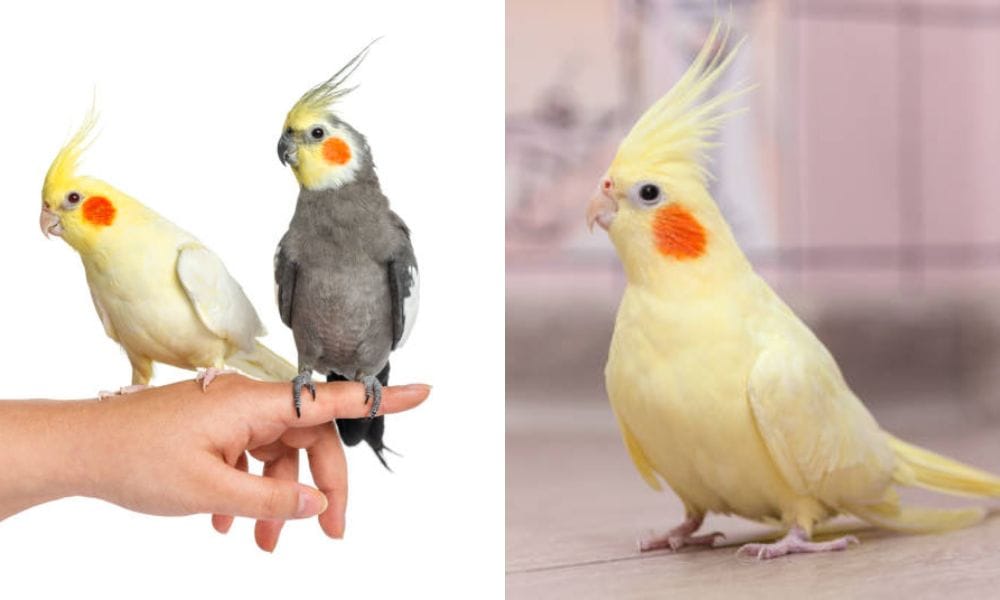
The Perfect Perch
Perches of varying diameters and textures are essential for foot health. Natural wood branches are ideal as they mimic the cockatiel's wild habitat and help to trim their nails. Avoid plastic perches or those covered in sandpaper, as they can be harsh on your bird's feet.
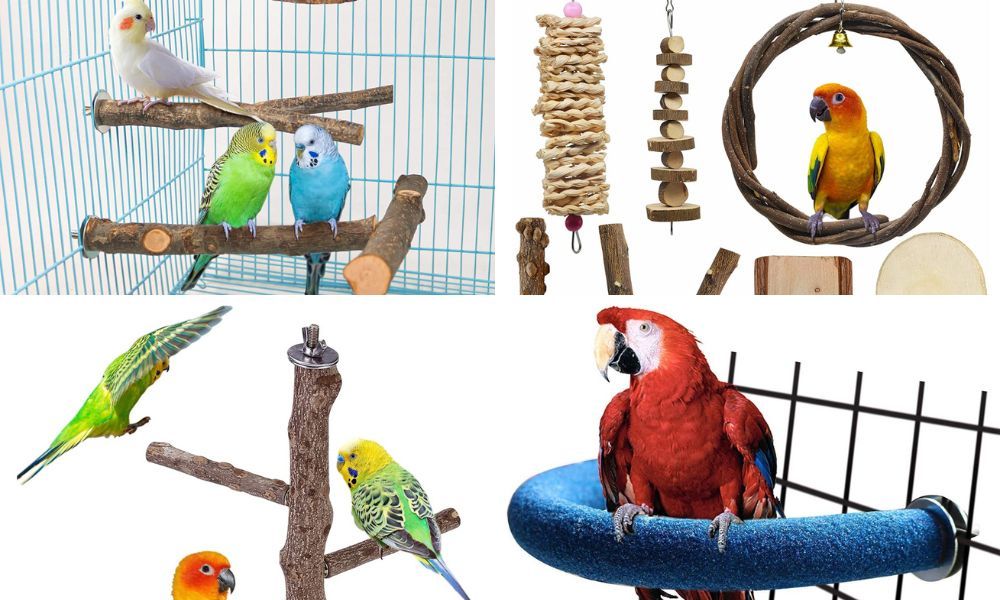
Safe and Sound: Avoiding Hazards
Cockatiels are inquisitive by nature, which can sometimes lead them into trouble. Ensure that your home is bird-proofed by removing toxic plants, covering windows, and keeping electrical cords out of reach. Non-stick cookware should also be avoided, as it can release fumes that are deadly to birds.
Creating a Comfortable Space
Creating a comfortable space for your lutino cockatiel is essential for their physical and emotional well-being. Here are some tips to help you create a comfortable and stimulating environment for your bird:
- Cage Size: Ensure your lutino cockatiel has plenty of room to move around. A cage that is at least 2x3x4 feet in size will give your bird enough space to fly, stretch, and exercise. This is particularly important for maintaining their physical health and preventing boredom.
- Bar Spacing: The bar spacing of the cage should be 1/2 inch or less. This prevents your bird from getting its head or body stuck, ensuring their safety.
- Perches: Provide a variety of perches made from different materials such as wood, rope, and PVC. This variety helps keep your bird’s feet healthy and stimulated, mimicking the natural environment they would experience in the wild.
- Toys: Offer a range of toys that cater to your bird’s natural behaviors, such as foraging, climbing, and flying. Rotate these toys regularly to keep your bird engaged and prevent boredom. Toys are not just for fun; they are crucial for your bird’s mental and physical health.
- Temperature: Maintain a comfortable temperature in your bird’s room, ideally between 65-75°F (18-24°C). Avoid placing the cage near drafts or in areas with extreme temperatures, as this can cause stress and health issues.
- Humidity: Keep the humidity level around 50-60% to prevent respiratory problems. Using a humidifier can help maintain the appropriate humidity levels, especially in drier climates.
- Lighting: Provide a photoperiod of 10-12 hours of light and 12-14 hours of darkness to simulate a natural day-night cycle. This helps regulate your bird’s biological clock and promotes overall well-being.
- Noise: Keep the noise level in your bird’s room to a minimum. Avoid placing the cage near loud appliances or in noisy areas, as excessive noise can cause stress and anxiety.
- Socialization: Spend time with your bird daily, engaging in activities such as playing, cuddling, and training. Social interaction is vital for their emotional health and helps strengthen the bond between you and your pet.
- Cleaning: Regularly clean the cage to prevent the buildup of bacteria and odors. Remove droppings and uneaten food daily, and perform a thorough cleaning of the entire cage, including perches and toys, at least once a week.
By following these tips, you can create a comfortable and stimulating environment for your lutino cockatiel. Remember to always prioritize your bird’s health, safety, and well-being, ensuring they lead a happy and fulfilling life.
The Joy of Music and Sounds
Lutino cockatiels are known for their ability to mimic sounds and whistle tunes. The lutino variation of the yellow cockatiel is known for its distinct appearance and ability to mimic sounds. Playing music or whistling to your bird can encourage them to talk and whistle back, providing mental stimulation and entertainment for your feathered friend.
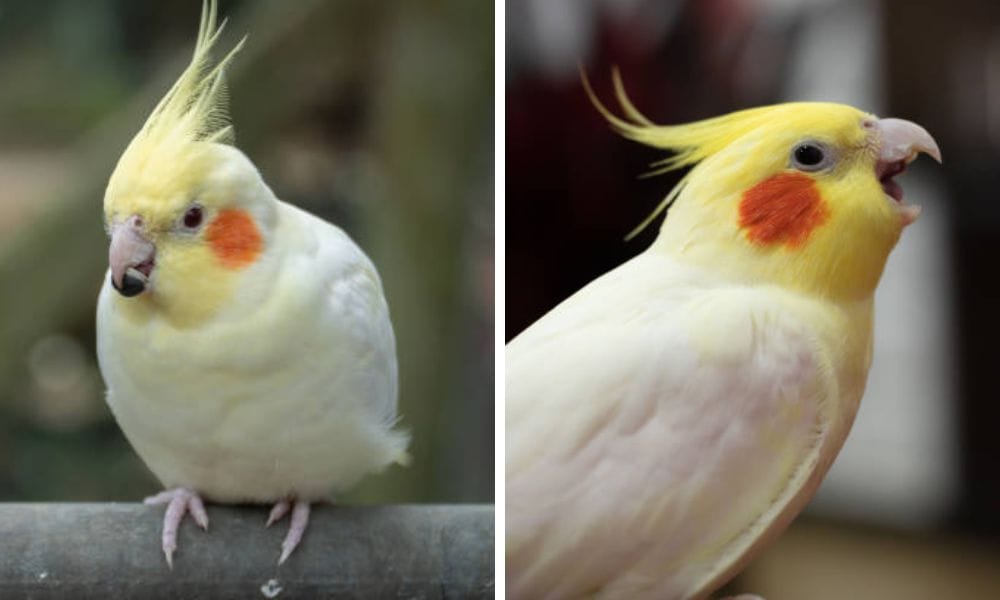
Summary
Creating the perfect habitat for your lutino cockatiel involves more than just a well-equipped cage; it requires understanding their unique needs and behaviors. By providing a spacious cage in a social location, a balanced diet, companionship, engaging toys, and regular health checks, you can ensure a happy and healthy life for your pet. Remember to spend quality time training and bonding with your lutino cockatiel, as this will foster a strong and loving relationship.
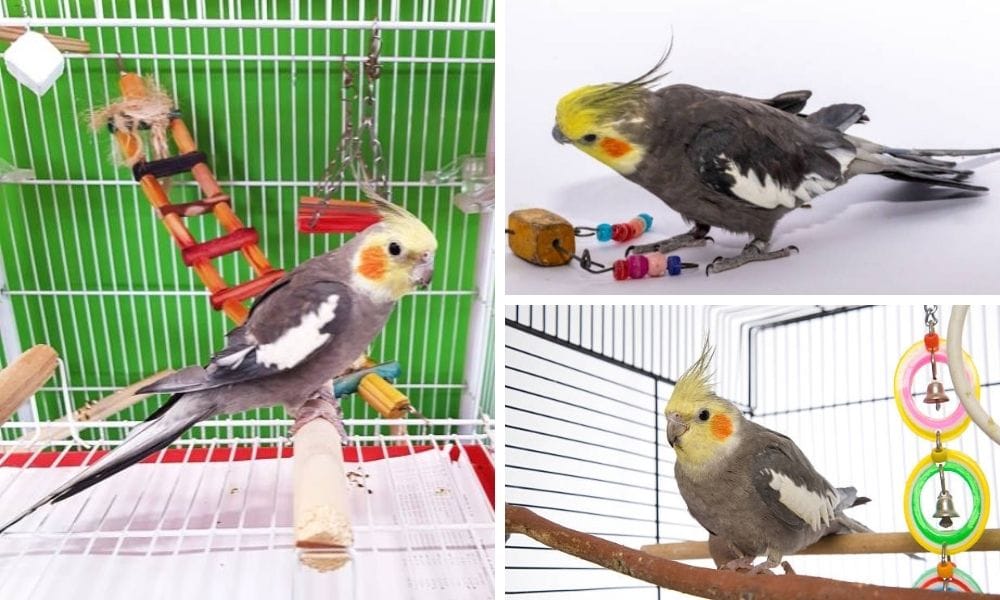
FAQ Section
Q: How can I tell if my lutino cockatiel is male or female? A: Determining the sex of a lutino cockatiel can be challenging, as the lutino mutation masks the usual visual cues. However, males tend to have brighter yellow coloring and may be more vocal and inclined to whistle. Male cockatiels often display a full yellow head, while females exhibit a less vivid coloration. DNA testing is the most accurate way to determine the sex of your bird.
Q: Can lutino cockatiels be kept with other parrot species? A: While lutino cockatiels can be social, it’s important to be cautious when housing them with other species. Size and temperament differences can lead to conflicts. Always introduce new birds gradually and under supervision to ensure compatibility.
Q: How often should I clean my lutino cockatiel’s cage? A: The cage should be cleaned regularly to maintain a healthy environment. Remove droppings and uneaten food daily, and perform a thorough cleaning of the entire cage, including perches and toys, at least once a week.

